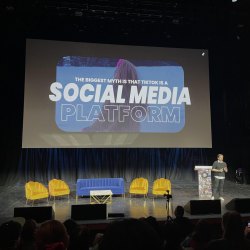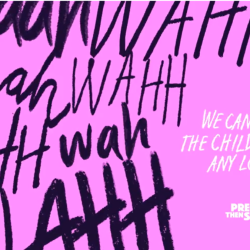This month’s theme is about exploring how well we’re coping with change.
I think it’s safe to say that — certainly for this generation — we have never faced more uncertainty than exists today. The ongoing impact of the pandemic. The invasion of Ukraine. Climate change. Supply chain problems. Brexit. The cost of living crisis. The housing crisis. The great resignation.
You name it, we’re living through it.
The past two and a half years have impacted every facet of our lives; physically, emotionally and financially
And yet, with all of this happening us, it feels like many brands are either choosing to ignore the reality we’re collectively living in, or are virtue signalling through their communications (with comms that are often at odds with their business practices I hasten to add). It’s a bizarre situation – especially when you consider the huge focus on ‘brand purpose’ that’s dominated the industry headlines over the past few years.
On the negative side, this behaviour has revealed the true purpose of many brands, but on the positive side, it’s created an incredible opportunity for brands to establish their purpose in culture beyond simply selling stuff under the thin veil of doing good for individuals and communities.
Look, I get that the role of a dish soap brand isn’t the same as that of one providing affordable housing. And the role of a car in someone’s life differs from the role of a fish finger, but if you believe in the power of brand to create distinctiveness and competitive advantage, then there’s always a role to play beyond the product you sell. If a fizzy drink brand can redefine an entire category and then encourage an entire generation to embrace it, then as far as I’m concerned, any brand can do the same.
This is a personal anecdote but one that I feel is a good example of how a brand could embrace change (or not as it happened)…
Next month, my son turns seven, which is mad when I still remember the months running up to his birth. Like many expectant parents, we decided to do NCT, or, as it became known in our house; ‘the most expensive friends we’ve ever bought’.
We were in the midst of moving to Hampshire from London, so decided it would be better to do the course in the town we were moving to, which meant taking the train out of London twice a week after work for several months. For anyone who has done NCT, you’ll have likely done it in a local village/church hall of some sort, which are typically cold, fairly bleak places that usually have a peculiar smell about them.
The thing I could never work out is why we were doing the course there and not inside a (now defunct) Mothercare store — surrounded by the products we were primed to purchase at that time in our lives.
It felt like the perfect chance for Mothercare to go beyond its role as a retailer and bring its purpose to the fore and facilitate those incredibly nerve-racking yet exciting months, and create a loyalty so many brands crave. But this didn’t happen and in 2020 Mothercare, a sixty-year old brand, disappeared from the high street for good. Read any article about why and you’ll see statements like; “Mothercare didn’t adapt to a modern market”, and “the retailer had been beaten on price, convenience and the overall customer experience”.
Mothercare’s biggest failure
We know that investment in brand reduces sensitivity to price. We know that physical availability is a key lever for driving brand growth — so what’s left? Customer experience. That in my opinion was Mothercare’s biggest failure. That’s just one example. There are countless opportunities for brands to connect to people and culture being missed for reasons I can’t quite fathom.
Understanding the many roles marketing can play isn’t a new thing by the way. There’s a famous speech from 1997 where a young Steve Jobs talks about the fact that the role of marketing exists to help people get to know what a brand is for. A speech in which, he explains that the role of marketing isn’t [just] to talk about product features. A speech in which, twenty five years ago you had someone saying the world was complicated and noisy.
Well, life is more complicated and more noisy than it’s ever been and yet today it feels like more brands than ever are doing marketing that squarely focuses on running product features rather than helping the audience understand the brand’s point of view and purpose in the world.
Don’t get me wrong, communicating product features is important — but it shouldn’t be done in absence of defining your role in people’s lives. So to answer the question about whether we’re coping with all the change that’s happening I’d say that in general, while most people are, many brands aren’t — they’re simply choosing to ignore it.
What a missed opportunity that is.
Featured image: timur romanov / Unsplash


































